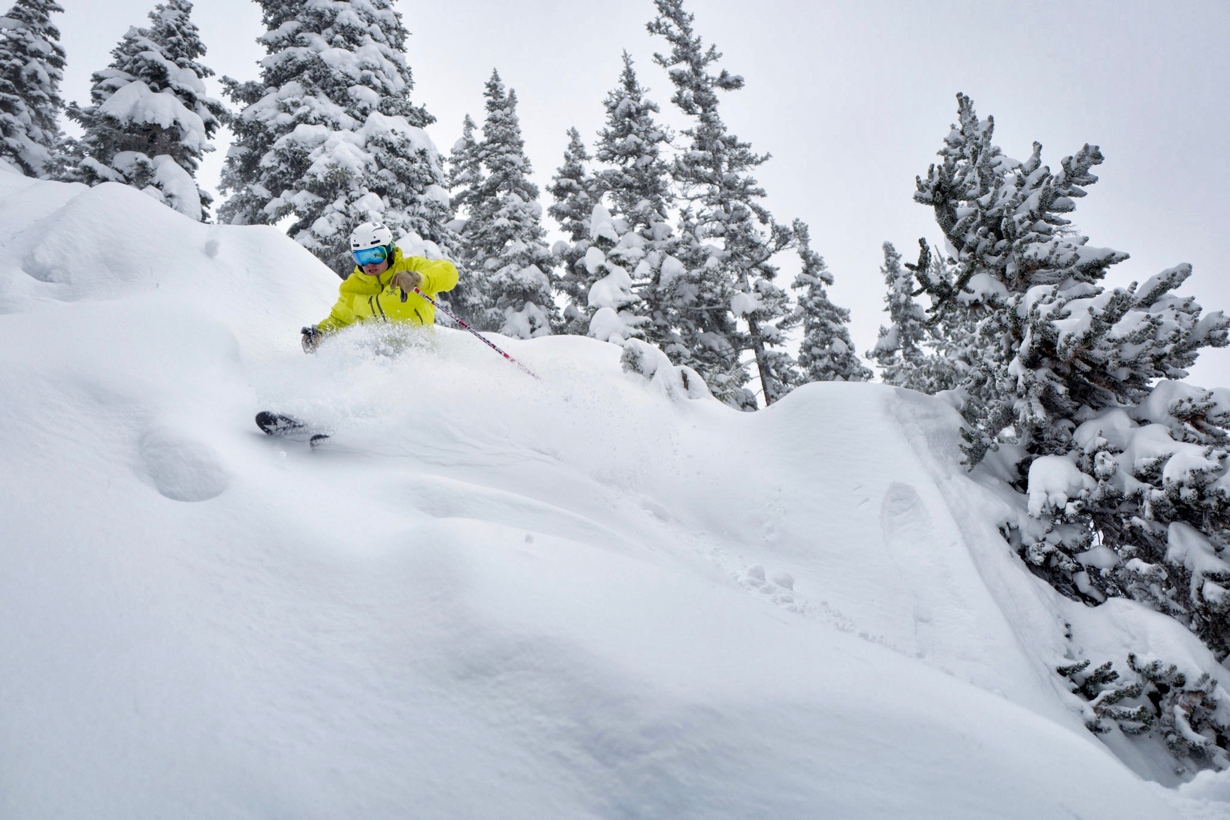Fit
The Caden Jacket was Arc’teryx’s “Expedition” Fit—the roomiest fit they offer (to accommodate extremely warm / thicker midlayers.) I wouldn’t say that there is a huge difference between the Expedition Fit and the Tantalus’ “Athletic” fit, but since I don’t tend to layer very heavily, I appreciate that the Tantalus is a bit less boxy. (You may disagree if you do tend to wear thick mid layers, such as the Arc’teryx Cerium SV). But at 5’10”, 175-180 lbs, the size Large Tantalus leaves me with plenty of room, and easily accommodates a size Large Arc’teryx Procline Hybrid Hoody, or a size L Patagonia Nano Air mid layer.
Packability
The packability of the Tantalus is fine, but if this is a big concern of yours, you’d be better off going with the slimmer-fitting Sweet Protection Supernaut (made of Gore Pro), or with a jacket made of a thinner fabric, like the Westcomb Apoc or the Flylow Genius jacket, both of which use Polartec NeoShell—though the Apoc and Genius are much more stripped-down, touring-focused jackets.
If we’re making this a fair fight / keeping things a bit more apples-to-apples, the Tantalus is more comparable to and more packable than the Flylow LabCoat 2.0, which is currently my other favorite fully-featured jacket.
Durability
I’ve got 30 days and counting in the Tantalus, and I have had zero durability concerns so far.

• Arc’teryx Tantalus costs $575, and weighs 680 grams in a Large. As you’ll see, the Tantalus comes in significantly cheaper than those jackets here made of Gore Pro, though for riding lifts and for ~20 minute boot packs—even in some very warm temps—I can’t say that I’ve noticed a big real-world difference between the Tantalus’s fabric and Gore Pro.
• Sweet Protection Supernaut costs $699, is made of Gore Pro, and weighs 587 g in a Large. It has a slimmer fit than the Tantalus through the torso.
• Patagonia Pow Slayer costs $699, weighs 680 g in a Large, and is made of Gore Pro.
• Flylow Lab Coat 2.0 costs $495, weighs 810 g in a Large, and is made of Polartech NeoShell. The Lab Coat 2.0 is a bit heavier, a slightly more relaxed-fitting, and a bit cheaper. It has a removable pow skirt, too.
• Strafe Temerity costs $495, weighs 670 g in a Large, and is made of Polartec NeoShell.
• Arc’teryx Lithic Comp costs $475, weighs 540 g in a size L, and is made of hybrid Gore and Trusaro materials. Again, the Lithic Comp is definitely not an apples-to-apples comparison to the Tantalus, so we’re talking about it here mostly to clear up any confusion about the Lithic Comp and the Tantalus. The Lithic Comp is the much more touring-focused jacket, while the Tantalus uses a heavier, tougher fabric, and is the much better option in severe conditions.

Bottom Line
The Arc’teryx Tantalus is a smartly designed jacket and a top pick of ours for an everyday, inbounds jacket, especially for areas that see frequent rain or wet, heavy snow. And the bonus here is that it can pull some double duty as a touring jacket, too. It’s ready for severe conditions, but thanks to its combination of heavier and lighter fabrics, it’s versatile enough to wear when it’s warm and nice out, too. And that’s why we gave it a Blister ‘Best Of 15/16’ Award.

know here’s a review of Rush jacket, which is hybrid as well, but made of Goretex Pro.
I wonder how does tantalus compares to Rush? I saw this jacket in store, I should try this, while I just walked by.
I see tantalus is more rugged, and have athletic fit instead of expedistion. (rush roomier then tantalus), less breathable but more rugged. Really interested in your opinion, what’s better of this two.
Interesting thing is that I have Rush in XL, which is quite roomy, but not too much. And I’ve tried Keibo in M (!!!). And I was able to fit in. In fact it fits great, if I treat this as city jacket: sleeves are long enough, and I’m 6ft4/210lbs.
if you think you need the bigger size, think again. I bought this thing in XXL and its big as a tent, probably can room up to 3 people.